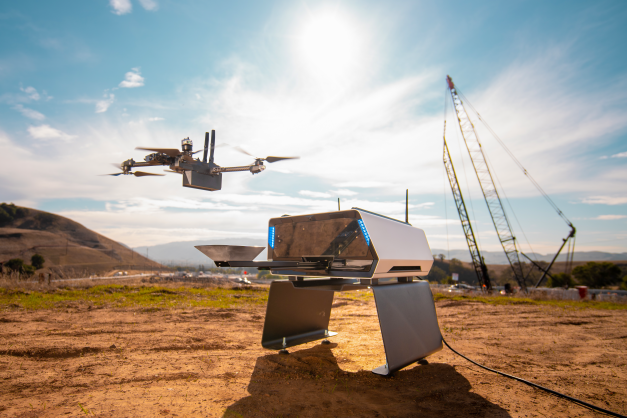Over the last few years, among the most significant strides in the world of technology has been the rapid development of UAVs. While they’ve been in use for a long time now, we’ve recently seen rapid development in terms of both the value they can provide and the accessibility for using the tools in the first place. As a result, we’re seeing more industries take advantage of these uncrewed vehicles, allowing for jobs to be done more safely and more efficiently. A lot of spaces fit that bill, but construction is certainly among them as they have quickly adopted new technologies, including drones, bucking the stereotype that it is an industry hesitant to adopt innovative practices.
We bring this up because the drone industry saw a major announcement on Wednesday with Skydio announcing their much-anticipated Skydio Dock product. The company had been working on their new drone-in-a-box product for a couple of years and officially made the announcement this week, announcing two different products with the Skydio Dock and the Skydio Dock Lite. The latter is, as the name suggests, a smaller version of the drone which can be flown in indoor spaces.
Skydio boasts that the Dock and Dock Lite are the “smallest, lightest, and smartest cloud-connected base stations for drones available on the market today,” and that they are alternatives to the “big, expensive, manual” solutions that were previously available. The big selling point of these solutions, along with the price and sheer size, is that they can be flown from a remote location. Rather than needing to rely on an on-site pilot, these can be flown by a single off-site operator, as well as flying autonomously. The remote operation is highly intuitive as well, with controls reminiscent of most gaming controls and the drone being built with obstacle avoidance to prevent costly accidents. Additionally, the ability to perform these remote flights – including an automatic return to the base station to recharge and upload data – indoors could be a game-changer for facility managers looking for an autonomous solutions to capture their spaces, among other functions.
But the construction industry is a major space that should be able to derive significant value from this kind of solution from Skydio, with three major use cases that would make the most sense. The first one is with reality capture, providing a remote or autonomous solution to capturing the site. The Skydio Dock products can be pre-programmed to fly through certain areas of a job site to capture as-built progress throughout a project. Currently, the Skydio products are only ready to be equipped with cameras for photogrammetry techniques. These cameras can be used for both regular checks of a site to compare with previous captures, as well as to create 3D BIM models for projects, and to conduct stockpile checks. With the drone’s obstacle avoidance system, these flights can take place during the work day, though it’s typically recommended that they are done either before or after the site is closed for the day.
One of the other significant use cases that this kind of remotely-operated tool will support is, well, remote work. Obviously much of the work for a construction project has to be done on-site and in-person, but the pandemic accelerated the process towards remote office work. The Skydio Dock allows for a worker, who perhaps is managing multiple projects from a remote location, to attach a video camera to one of the drones and remotely fly with a foreman on site to get real-time updates without having to be physically present. This not only increases efficiency, but also potentially works towards sustainability goals by not having to drive and/or fly to multiple locations in order to get first-person updates on a job.
Finally, the Skydio Dock drones can be used to keep a better inventory of tools and machines on a site, particularly for larger areas. Instead of needing a person to go around an entire site and manually checking that everything is accounted for, the drone can make its regular flights after a work day and capture the entire site, allowing for easier verifications that everything is where it’s supposed to be. As the construction industry looks to cut down on spending, keeping proper track of a site’s inventory can be a big part of that.
As with any new tool, it’s likely that we will see even more use cases than what is originally imagined. That said, construction firms who have tested this technology have seen the benefits. Per a press statement, North Carolina Department of Transportation UAS Operations Manager Thomas Walls said, “(With this technology) we're able to monitor construction progress in more efficient ways than we previously could. We're capturing imagery, videos, and live streaming a feed back to our resident engineers for real-time data. It's a big cost saver for us, and we look forward to implementing it around the state for multiple applications and use cases."






